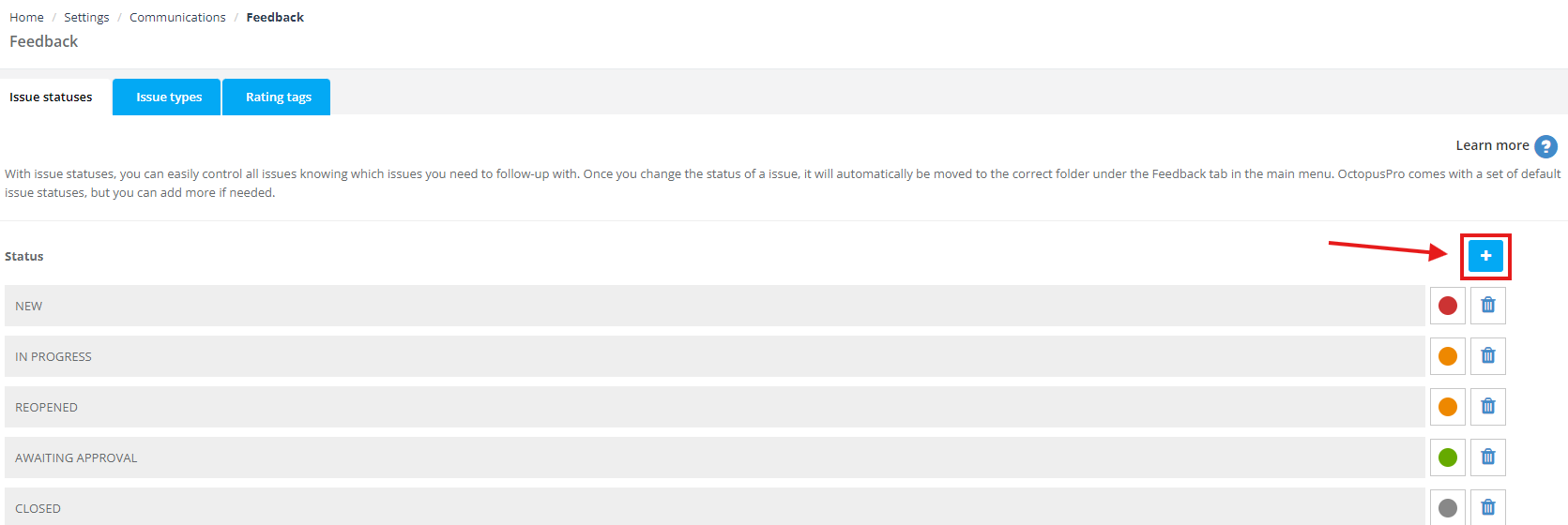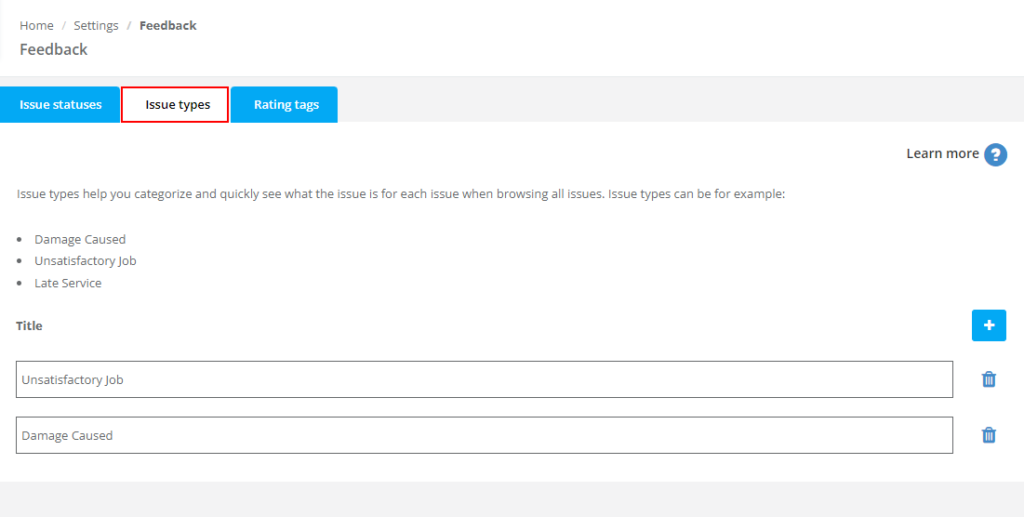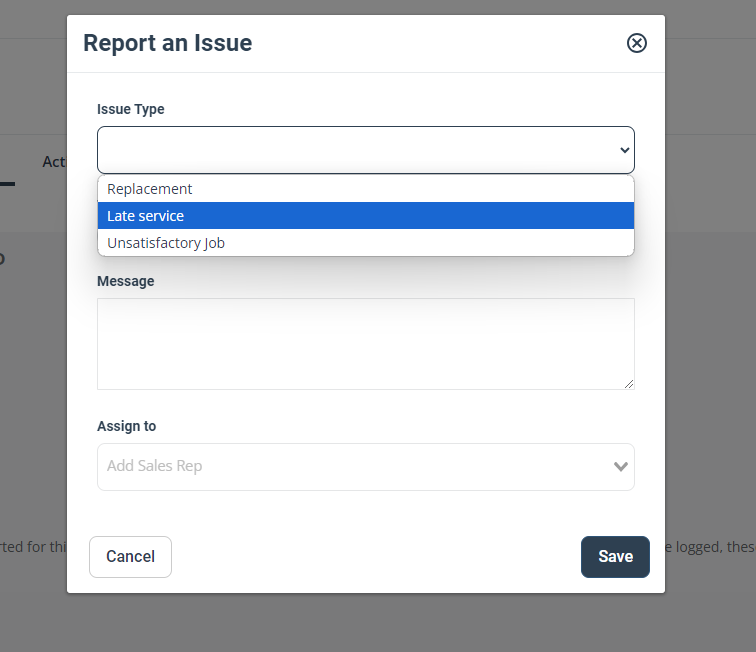Manage Customer Issues & Complaints in OctopusPro
OctopusPro’s Issue & Complaint Management module turns every grievance—late arrival, misdiagnosis, broken part, or billing dispute—into a documented workflow with clear owners, SLAs, and analytics. By mirroring frameworks such as ISO 10002 for complaint handling and standard incident-status models , the tool helps teams resolve problems faster, protect brand reputation, and convert negative feedback into product or process improvements.

What counts as an “issue” in OctopusPro
Any post-booking friction point can be logged:
- Operational – fieldworker no-show, schedule clash, equipment failure.
- Quality – poor workmanship, misdiagnosis, warranty call-back.
- Financial – invoice dispute, refund request, pricing error.
- Communication – missed confirmation emails, unclear scope.
Core features & benefits
Centralised complaint dashboard
- Cloud-based & scalable—access anywhere, no VPN, matches market shift to web SaaS.
- Role-based security keeps sensitive cases visible only to authorised staff, aligning with ISO 10002 confidentiality guidance.
- Full audit trail—every edit, note, or attachment time-stamped for regulatory proof.
Automated follow-ups
The To Follow queue holds deferred issues and triggers email/SMS nudges so nothing slips through—an approach linked to higher complaint-resolution satisfaction.
Integrated bookings link
Jump straight from a complaint to the affected booking, invoice, or fieldworker profile, reducing swivel chair time.
Configure Your Issue-Tracking Workflow (Statuses + Types)
A clear, colour-coded status model and a short list of issue types are the twin pillars of every recognised complaint-handling framework—from ITIL’s “Open → In Progress → Closed” ladder to ISO 10002’s requirement for transparent, time-bound updates.
With OctopusPro you can extend the five default states, assign custom colours, and create your own issue types, giving every user an instant snapshot of what needs attention and why. Custom workflows also map neatly onto SLA timers in your reports, helping you prove compliance and spot bottlenecks.
Default Statuses (and Why They Matter)
| Status | Meaning | Typical Trigger |
|---|---|---|
| New | Logged, awaiting triage | Portal form, CSR call‐entry |
| In Progress | Assigned and being fixed | Technician scheduled |
| Awaiting Approval | Fieldworker marked Resolved; needs admin / customer sign-off | Evidence uploaded |
| Reopened | Customer rejects fix; SLA clock restarts | Feedback link clicked |
| Closed | Approved & archived; KPI timer stops | Admin presses Close |

This minimal five-state model is what most analysts recommend for clean SLA tracking and clear dashboards.
Add a Custom Status
- Settings › Communications › Feedback & Rating.
- Click the “+” tab (top-right).

- Enter the Status Name and pick a Colour (consistent hues help avoid UX confusion).
- Save. New tickets—or existing ones you update—now display in that colour across lists, Kanban boards and mobile.
Example: Add “Waiting for Parts” in amber to flag jobs blocked by suppliers; reports will show how often parts delays hit your SLA.
Create Issue Types for Quick Triage
Issue types describe the nature of the problem—handy for filters, automated routing, and root-cause analysis.
Common examples: Damage Caused, Unsatisfactory Job, Late Service.
How to add one
- Settings › Communications › Feedback & Rating → Issue Types.

- Click “+”, name the type, Save.

- The new option appears in every Report Issue form so staff, customers and fieldworkers can pick it consistently.

Working with the “To Follow” & “All Issues” views
“To Follow”
Use when stock, authorisation, or a future event blocks immediate resolution—e.g., waiting for back-ordered parts. The defer-and-remind pattern prevents forgotten tickets, a common gap in legacy CRMs.
“All Issues”
Provides a 360° exportable list for trend analysis: spot recurring equipment faults, identify training gaps, or justify process changes—functions highlighted in market-size studies of complaint-management software.
Practical examples
| Industry | Complaint | Resolution path |
| HVAC | Technician arrived 2 h late | Status New → In Progress; scheduler applies travel-time buffer, sends goodwill voucher |
| Cleaning | Invoice higher than quote | Finance adjusts line item, status Awaiting Approval until customer signs off |
| Landscaping | Mower blade broke onsite | Parts team logs equipment issue; To Follow until replacement delivered |
Turning each case into structured data fuels continuous-improvement loops.
Business impact
- Faster resolution—cloud dashboards cut handling time; companies see up to 30 % quicker close rates.
- Higher retention—swift, transparent fixes convert 70 % of complainants into loyal advocates according to Claromentis analysis .
- Insight-led growth—aggregated complaint themes guide product tweaks, echoing Forbes’ view on feedback-driven innovation.
To stay updated, please subscribe to our YouTube channel.

